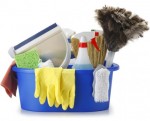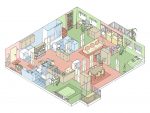June Key Home Buying Trends

Florida Consumer Sentiment Climbs Again
Economic sentiment rose 3.1 points to 84.1 in June, with all five index components improving. The biggest gains were in views of personal finances.
Two New Property Insurers Approved
Two more property insurers have been approved to operate in Florida, bringing the total to 14 since recent reforms. Officials say the market is stabilizing.
Florida Sees Surge in Commercial Real Estate
Fueled by population gains, tax advantages and a strong economy, commercial real estate investment is rising across the state, experts say.
Florida Leads in International Home Sales
International buyers purchased 78,100 U.S. homes over 12 months, reflecting a 33.2% jump from the year before and the first increase since 2017.
Luxury Market Stronger Than Ever
Industry leaders say the high-end market, particularly for homes priced above $10M, is continuing to gain strength, with all-cash deals the norm.
Florida Sees Shift in New-Home Prices
Florida is among the top states seeing new construction price declines, creating potential opportunities for buyers as builders adjust to market conditions.
Florida Ranks High Among 2025 Movers
Florida continues to attract new residents, particularly Baby Boomers, in 2025, thanks to warm weather, no income tax and affordability.
Mortgage Giants to Count Crypto as Asset
Homebuyers may soon be able to use crypto as part of their mortgage qualifications, under a new order for federally backed loan programs.
Insurance Reforms Stabilizing Florida Market
A Florida consumer group says recent reforms have reduced litigation, lowered Citizens’ policies and attracted new insurers, helping stabilize the market.
Rate, Home Price Growth Forecasts Lowered
Fannie Mae now sees slower home price growth and slightly lower mortgage rates through 2026, with modest gains expected in overall home sales.
U.S. Home Prices Down 0.2% in May
The FHFA said prices are up 2.8% from last year across the United States. In the South Atlantic census division, which includes Florida, home prices increased 1.4%.
U.S. Consumer Confidence Improves in July
Americans remain concerned about tariffs, but confidence rose two points to 97.2 in July, up from 95.2 the previous month.
















 Kim N. Bregman
Kim N. Bregman